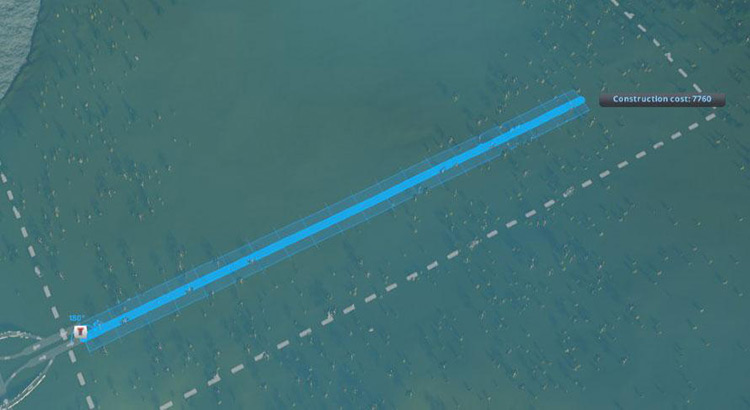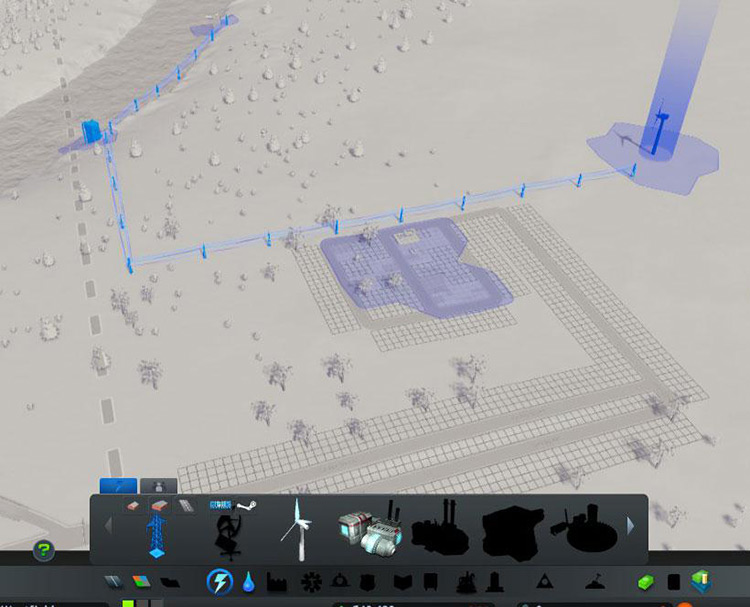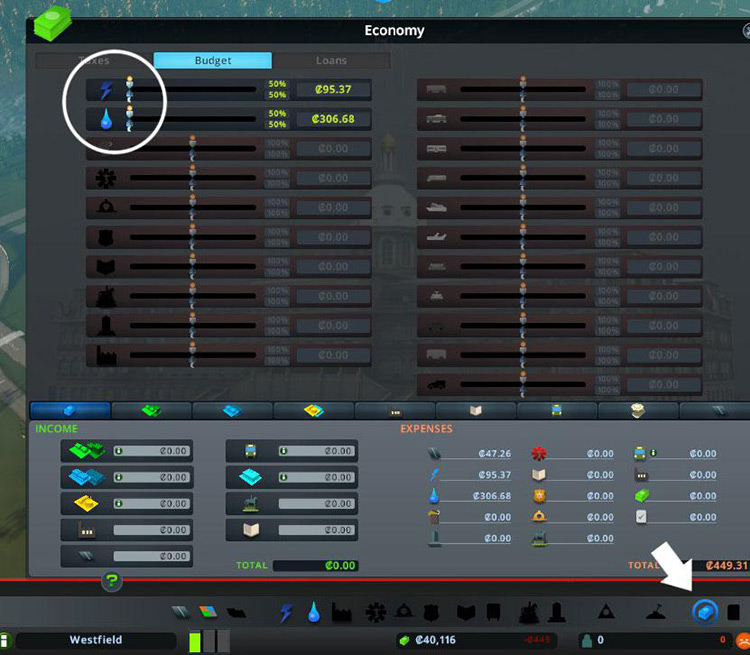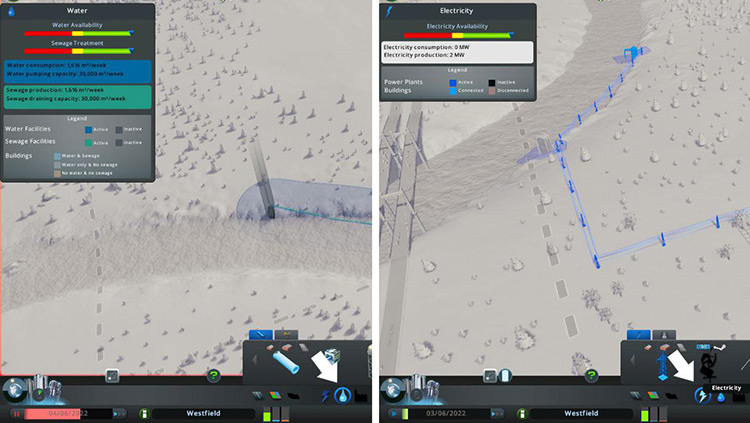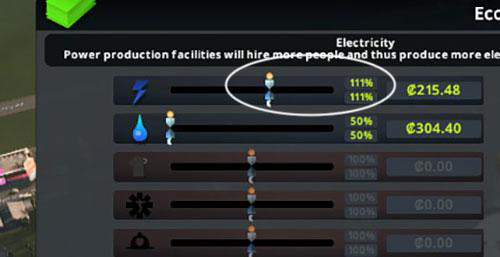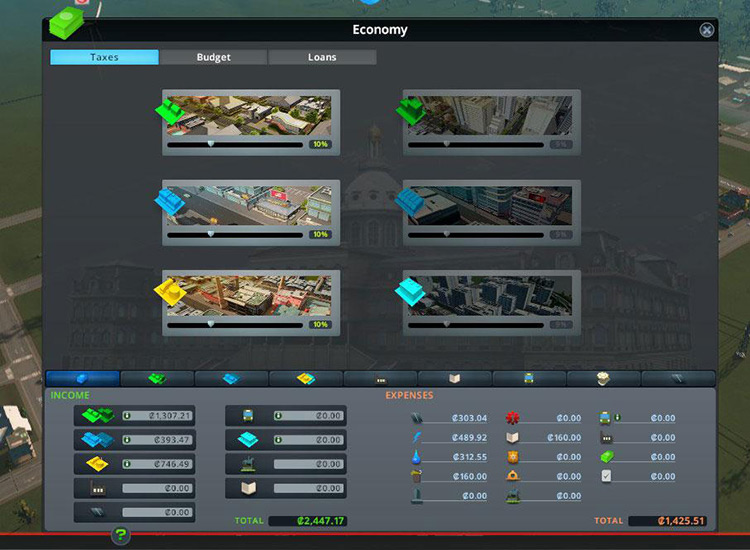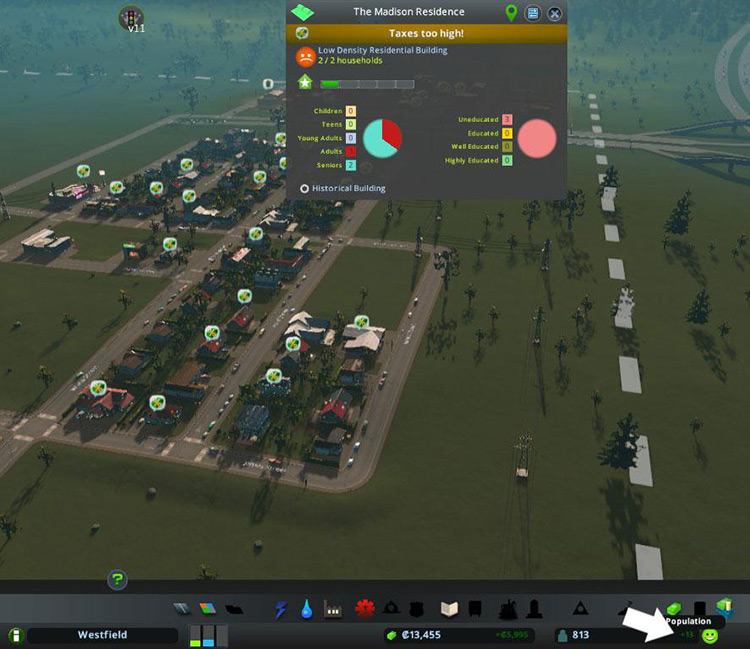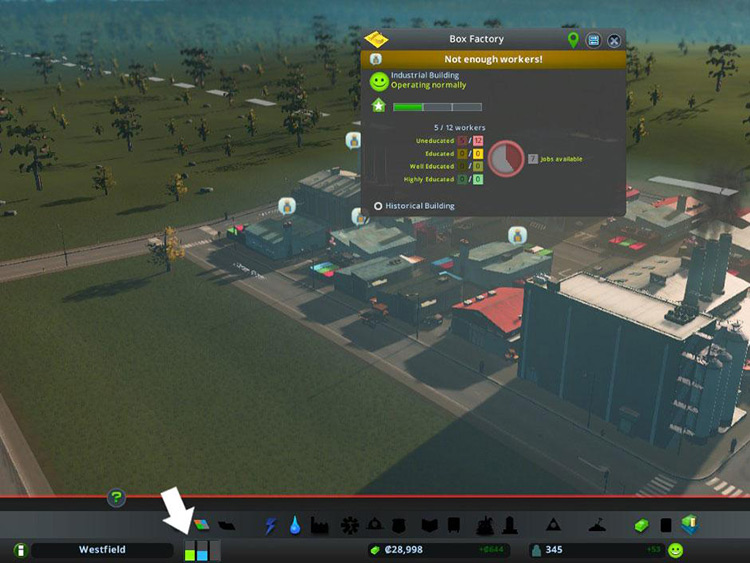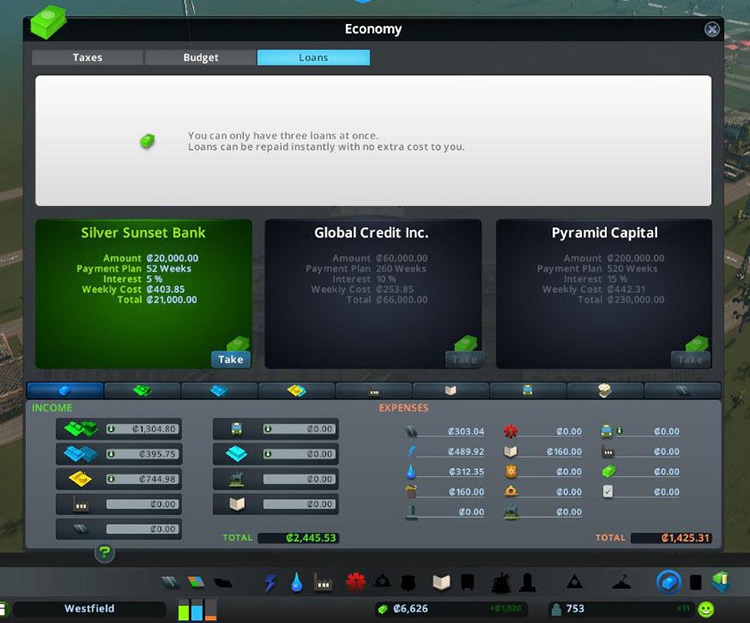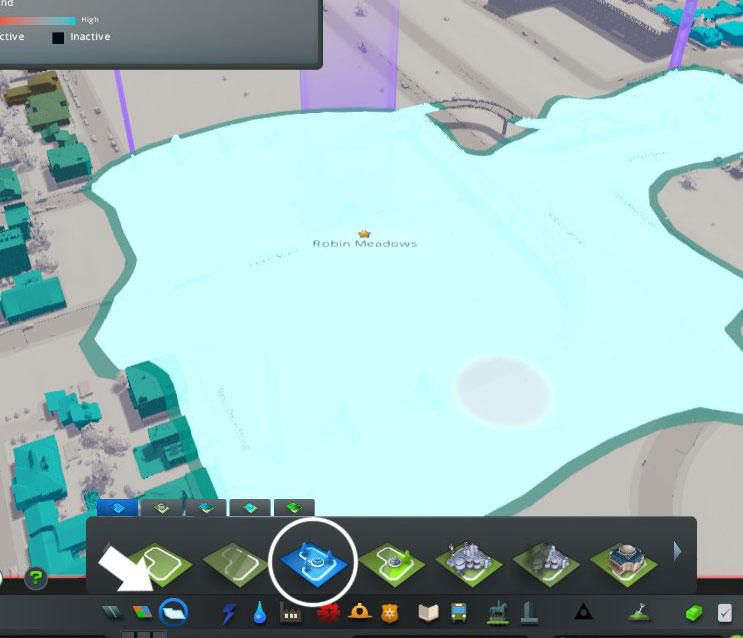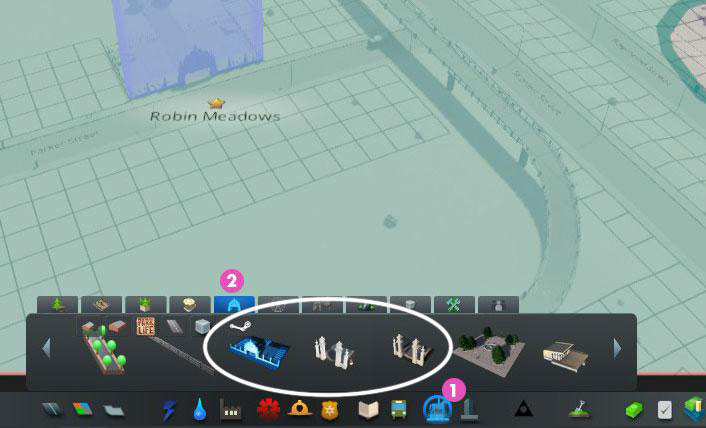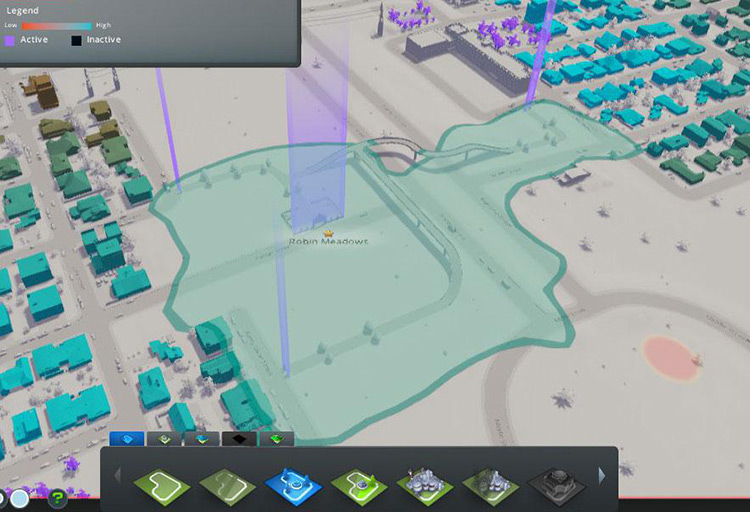Here are a few methods to pad your coffers and keep you from plunging into bankruptcy in the early game:
Be thrifty when building roads and early-game utilities Lower the budget for services Raise taxes Keep up with zoning demands Take out a loan Build moneymaker parks (Parklife DLC)
1. Be Thrifty When Building Roads and Utilities
When you’ve got a brand new map, it’s tempting to start immediately laying out a grand design for your town using roads. But roads come at a pretty hefty cost in terms of both initial build and upkeep. So at the start of the game, think small! Try to build fairly close to the initial highway connection that comes with your map, so you don’t have to build long roads. Same goes for your electricity and water infrastructure. The build and upkeep costs for power lines and water and sewage pipes can quickly add up. Try to find the closest spots where you can build your wind turbine and water pump while still getting the max output. Even if the start of your town doesn’t quite match what you imagined your city to look like, keep in mind that you’ll have plenty of freedom to redesign and move things around when your city’s economy is stable.
2. Lower the Budget for Services
After building your starter town as economically as possible, you can tighten your purse strings even further. The basic services your citizens demand, like power and water, come with huge upkeep costs. When you have barely any population, the default budget (100%) for these basic services will far exceed the amount of tax income you earn. However, you’ll also be producing more water and electricity than your fledgling town needs. (The amount of water and electricity produced by your facilities is directly determined by budget.) The solution: set your budget to the minimum that you can get away with while still keeping your citizens covered. At the start of the game, this means taking the sliders all the way to the left. As your town grows, just raise the budget in small increments as necessary—just enough to keep water and power availability in the green. Also keep an eye out for notifications about water and power shortages. Later on, if you’re low on power or water, you can take the slider to the right past 100% to make your facilities overproduce—if, for example, you’d prefer to hold off on building a new power plant. Use this same technique with the other services you unlock: police, fire, garbage, healthcare, etc. Managing your budget this way can often mean the difference between making or losing money each week in the early game.
3. Raise Taxes
By default, taxes across the different zone types (residential, industrial, commercial, and office) are set to 9%. You can raise your taxes slightly to get that little bit of additional income. Be very prudent about this, because higher taxes can make existing residents unhappy (and lower the zoning demands, because no one wants to move in). In fact, people may start moving out if their taxes are too high. For most cities, a tax rate from 9-12% is a safe bet, depending on how well-covered they are by services (happy citizens are less likely to move out). A good tip is to raise taxes by only 1% at a time, and make sure people aren’t reacting negatively. However, if you’re feeling mischievous, there’s the tax “hack”. As long as your population growth is still in the positive, you can briefly raise taxes all the way up in all your zones to a whopping 29%. After a couple of weeks, people will start complaining and start to move out, so monitor your population growth indicator, as well as any buildings complaining about high tax. Once your population growth hits zero, you’ll want to lower taxes back down to a reasonable 9-12%. But the few weeks or so of high taxes should have given your coffers a little bit of a boost.
4. Keep Up With Zoning Demands
Responding to zoning demands is an important part of keeping the steady population growth—and therefore tax income growth—that’s so crucial early on. For instance, if commercial or industrial zone demand is high, prioritize that over residential, as people aren’t going to want to move in if there are no jobs. On the other hand, don’t keep building commercial or industrial zones when the residential demand is high. This will often result in understaffed commercial or industrial buildings, which can end up abandoned.
5. Take Loans
If you find yourself short on funds for a service that your citizens are starting to demand, it might be time to take out a loan. The following loans are available to you at different milestones: You’ll have to pay interest, of course, so make sure to invest your loan money wisely! Good choices to spend loans on:
Necessities like power and water facilities Your first elementary school to encourage houses to level up A city expansion tile if you’re out of space for zoning
There’s also a ₡50,000 Bailout Loan that you’ll automatically get offered if your money falls below -₡10,000 (but if you follow the tips in this article, you won’t get to that point!)
6. Level Up Your Buildings
Residential, industrial, commercial, and office buildings all pay more taxes (and house more families per building) as they level up. So apart from zoning to get more and more buildings, another great way to increase your tax income is to encourage your existing buildings to upgrade. Here are a few ways to do that:
Making sure they are covered by services (fire, police, health care, etc.) Educating your citizens Adding parks and plazas
7. Moneymaker Parks (Parklife DLC)
If you have the Parklife DLC, you can take advantage of a strategy that takes advantage of foot traffic. Parklife park areas charge citizens a fee every time they go through one of your parks. Your citizens are willing to pay this fee if walking through the park will cut their commute short, or allow them to forgo driving entirely and just walk instead. Here’s how it works: First, you’ll need to unlock parks by hitting the Tiny Town milestone. Next, plan out a desirable pedestrian path and paint a Parklife park area encompassing it. Place a park main gate (the small park main gate works too) on one end of your path and a side gate at the other end. If there’s enough foot traffic, you’ll see the cash start rolling in pretty soon.
